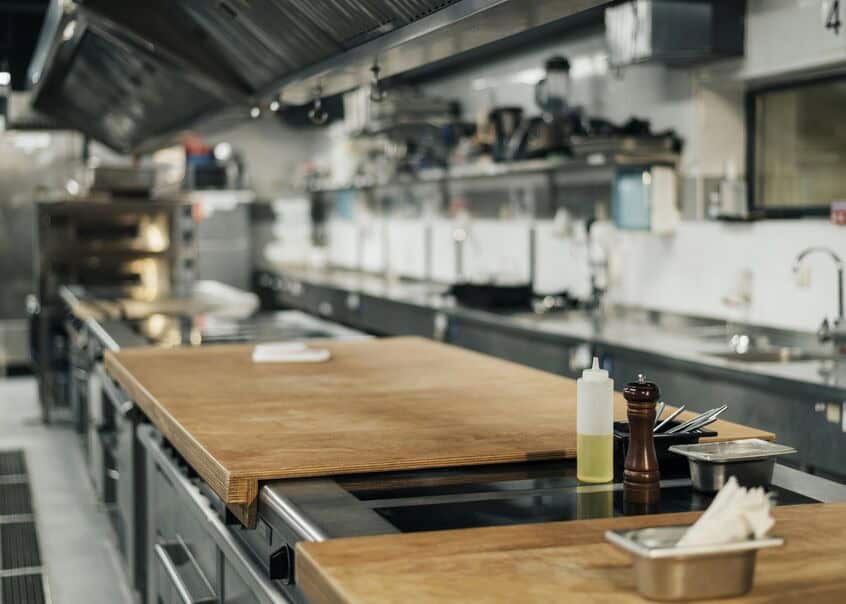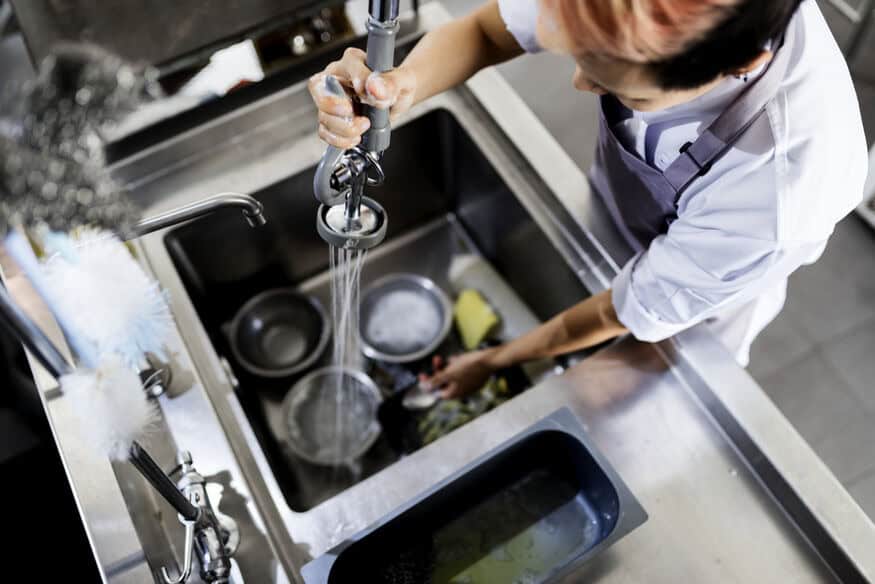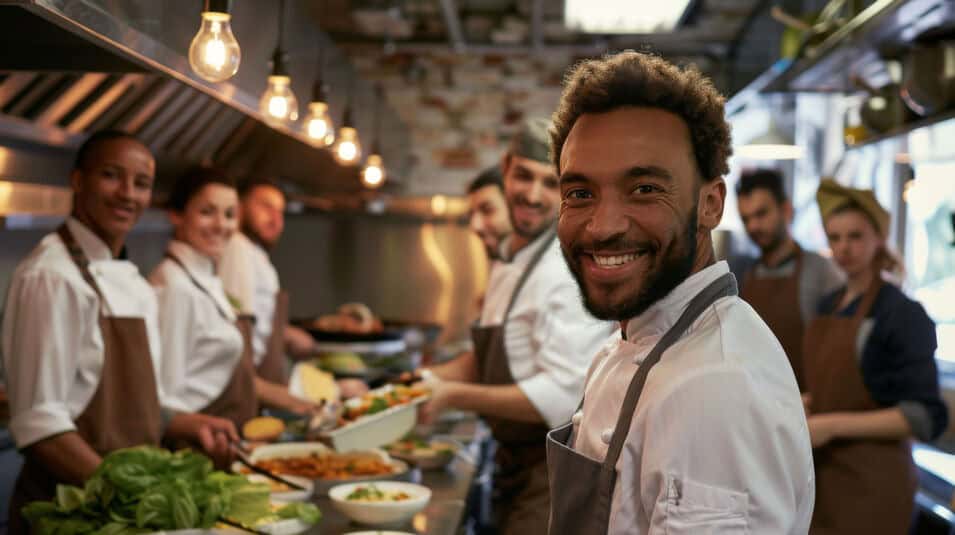When energy consumption costs rise, so does the cost of restaurant operations. However, as demand for eco-friendly businesses grows and government incentives for green practices increase, you can not only make a positive impact on the environment but keep your energy bill from boiling over.
You can offset rising costs by investing in sustainable restaurant equipment, from standard appliance models built for energy efficiency to water conservation equipment. Upgrading to green options and adopting restaurant sustainability practices can save you money and increase your profit, too.

1. Save Money on Utilities with Energy Efficient Appliances
Energy-efficient water heaters, dishwashers, deep fryers, and commercial ovens use less energy, saving you money on electricity and gas bills. Chances are you’re spending anywhere from five to seven percent of your total revenue on power and gas. The average restaurant pays about $0.11/kWh for electricity and $1.05/therm for natural gas, which doesn’t seem like much at first glance. But if you’ve got a 4,000-square-foot restaurant with average volume, you can expect to pay about $15,000 yearly for gas and electricity.
How Energy-Efficient Appliances Save Money
Using ENERGY STAR® certified equipment reduces energy usage by 30-50% compared to standard models, saving you an average of $5,000 to $7,500 annually. To save more, consider upgrading your cooktop to induction since they offer precise cooking temperatures, unlike the energy-wasting gas or electric models. If you’re unsure you can afford appliance upgrades, rebates are available to help offset the expense. These incentives may vary depending on location.
2. Reduce Water Consumption with Conservation Equipment
The hospitality industry accounts for about 15% of commercial water usage because of the high water requirements in a kitchen. Using water to cook, wash dishes, and clean the establishment adds up fast. Luckily, the water savings from conservation efforts add up quickly, too.
How Water Conservation Saves Money
Opting for sustainable restaurant equipment like a water-saving dishwasher can reduce the water you use every cycle. Swapping your spray valves for low-flow pre-rinse options can save 25,000 gallons of water annually. Upgrading to high-efficiency water heaters is so efficient because they extract a high level of heat energy (BTUs) without a lot of waste. Several states offer rebates for water-efficient appliances to help offset the cost of changing your water equipment.
3. Better Builds Mean Fewer Repair and Replacement Costs

Unless you have just opened your restaurant, chances are you’ve had equipment break down. Nothing lasts forever, but the more you spend on repair and replacement, the less profitable your establishment becomes. It’s not just about the sustainable restaurant equipment in your kitchen but also about the HVAC system, plumbing, electrical, and general upkeep. Experts say you should budget an average of $770 a month for these expenses.
Data shows restaurant owners across the United States spend an average of $28 million annually on repair and maintenance costs. That’s expensive, and though preventative maintenance can go a long way toward reducing a sudden major expense, it can’t stop everything.
Investing in sustainable equipment provides another buffer against bleeding money into the repair and replacement of old and energy-wasting appliances.
How Working, Sustainable Equipment Saves Money
Sustainable equipment is made with durable materials, so you don’t have to replace it as often. Opting for stainless steel, though it has a higher initial price tag, saves money in the long run because it lasts longer and resists corrosion.
And thanks to government incentives to promote sustainable development, ranging from rebates and grants to tax credits and more, more restaurants can save money today than ever before. Today’s customers are more likely to spend money at eco-friendly restaurants. By focusing on a more sustainable future, you can attract more customers and bolster your brand’s reputation.
Eco-Friendly Sustainable Restaurant Equipment Examples
- Refrigeration systems using R-290 refrigerant are both durable and energy efficient.
- Stainless steel cookware is recyclable, non-toxic, and has a low carbon footprint.
- Lodge cast iron cookware is non-toxic, highly durable, budget-friendly, and certified under the “Safe Drinking Water and Toxic Enforcement Act” (Prop 65).
- Compostable utensils and dishware are more expensive than traditional single-use plastic products but much better for the environment.
4. Waste Reduction Minimizes Disposal Costs
Whether from large portions, ordering too much stock, or not selling enough of a particular menu item, restaurants end up with food waste, which translates to lost revenue and, ultimately, higher food costs. The restaurant industry generates 11.4 million tons of food waste every year. If you want to do your part to minimize waste, the EPA Food Recovery Challenge rewards businesses that reduce waste.
How Reducing Food Waste Saves Money
Investing in composting machines, waste-reducing appliances, and food-tracking technology lowers food disposal costs because less waste goes to landfills. Today’s smart cooking technology prevents overproduction and food waste. The Internet of Things (IoT) can track, monitor, and minimize waste across the supply chain. Sensors track storage conditions, temperature, and humidity to keep good food fresher longer as it moves from local farms to the table. Data analytics makes it possible to predict spoilage and recommend how to prevent waste. Automation can notify you about upcoming expiration dates or compromised storage conditions, allowing you to take action quickly.
Adjusting your menu to account for seasonal changes isn’t just more cost-effective; it is one of many small steps to achieving a zero-waste menu. Think about the carbon footprint of hauling out-of-season produce from another area. In-season, local ingredients don’t have to travel as far, even if they must be shipped to you.
If you’re feeling adventurous and it matches your restaurant’s theme, consider adding more plant-based dishes to your menu. Meat production and consumption play a role in greenhouse gas emissions. There are a ton of classic meatless dishes out there already—chili, vegetable soup, spaghetti marinara—that you can elevate with your own spin. Adding meat substitutes like tofu, beans, and lentils gives you more flexibility while expanding your vegetarian and vegan menu to accommodate more health-conscious consumers.
5. Green Upgrades Avoid Non-Compliance Fines

Upgrading your kitchen to green, sustainable restaurant equipment and food packaging made with recyclable materials saves the expense and hassle of non-compliance fines. Federal and local sustainability laws, such as the Clean Water Act (which regulates grease disposal), must be abided by. Using grease traps prevents wastewater violations, and opting for a high-efficiency exhaust hood reduces air pollution.
In Wisconsin, for example, several cities ban or restrict single-use plastic bags. Some areas also have mandatory food waste composting regulations for restaurants generating a certain amount of waste every week. Though there isn’t a statewide mandatory commercial recycling program, some areas may have their own regulations.
Though nothing is mandatory statewide in Indiana, restaurants are encouraged to adopt sustainable options and procurement best practices. Some counties have commercial composting regulations in place.
How Regulation Compliance Saves Money
Spending money upfront to maintain compliance avoids the costly expense of a fine (or a shutdown) if you’re caught operating outside the law. Make sure you’re aware of any local guidelines to prevent problems.
Which of These Sustainable Restaurant Practices Will You Start Using?
Whether you start small with one upgrade at a time or go for the “green” and do it all, switching to sustainable restaurant equipment saves money, improves efficiency, and ensures regulatory compliance. Government incentives and rebates are available to help with the financial burden this may place on your business. Investing in sustainability measures helps to future-proof your restaurant while attracting eco-conscious customers.